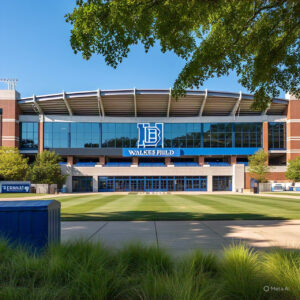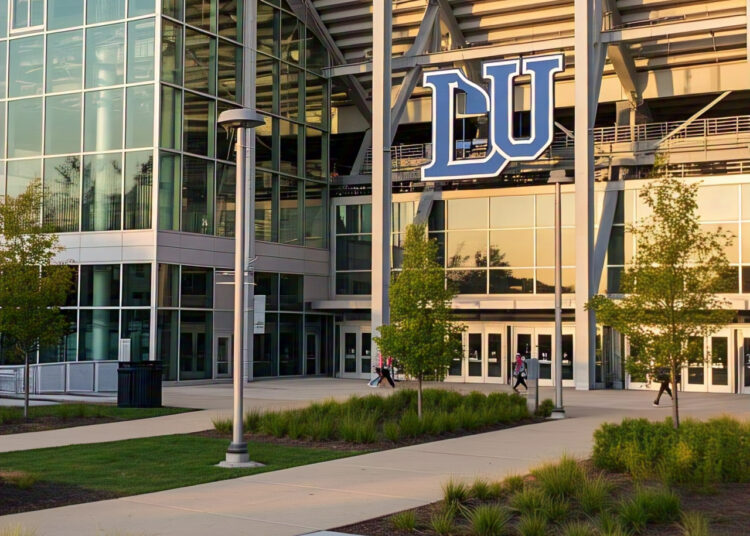BREAKING NEWS: Duke Unveils $1.3 Billion Renovation to Brooks Field at Wallace Wade Stadium, Redefining the Future of College Basketball
In a historic move that has sent shockwaves through the college sports world, Duke University announced a groundbreaking $1.3 billion renovation of Brooks Field at Wallace Wade Stadium. While the stadium has traditionally been the home of Duke Blue Devils football, the ambitious renovation signals a visionary expansion that is set to redefine its role — not just within Duke Athletics, but within the broader scope of collegiate sports infrastructure, especially basketball.
The announcement came during a press event held at the stadium, where Duke University President Vincent Price, Athletic Director Nina King, and several key stakeholders revealed digital renderings, construction plans, and a bold vision for the future. The renovation, slated to begin in early 2026, aims to transform the historic venue into a state-of-the-art multi-sport complex with cutting-edge amenities designed to elevate the experience for athletes and fans alike.
A New Era for Duke Athletics

What makes this renovation truly groundbreaking is its cross-disciplinary approach. Though traditionally a football facility, Wallace Wade Stadium is set to incorporate an indoor basketball training and event complex that will rival the top NBA-level practice facilities. The goal is to establish a seamless integration between football, basketball, and other athletic departments, fostering a collaborative culture of excellence.
“This is more than a renovation,” said Nina King during the press conference. “It’s a reinvention. We are creating a venue that will carry Duke Athletics into the next century. And yes, that includes redefining the environment for college basketball.”
Inside the $1.3 Billion Project
The proposed enhancements to Brooks Field at Wallace Wade Stadium will include:
A New Multi-Sport Pavilion: This flagship structure will house basketball training courts, team lounges, nutrition centers, sports medicine clinics, and data-driven performance labs.
Technologically Advanced Infrastructure: From AI-powered training simulators to immersive fan experiences powered by AR/VR, Duke is putting innovation at the forefront.
Luxury Spectator Amenities: A new tiered-seating system, expanded concourses, and premium suites will offer world-class comfort for fans. There will also be a dedicated basketball court visible through glass atriums from outside the stadium.

Sustainability Initiatives: The renovation incorporates green roofs, solar panels, and water reclamation systems — aiming for LEED Platinum certification.
Expanded Capacity and Flexibility: While maintaining a football-first footprint, the new design allows the stadium to convert for major basketball exhibitions, concerts, and global sporting events.
The Future of College Basketball?
Though the headline references basketball, Duke’s move is strategic. With the current state of college athletics evolving rapidly due to Name, Image, and Likeness (NIL) rights, conference realignments, and increased professional scouting interest, elite programs are racing to keep pace. Duke, already a perennial powerhouse in basketball, appears to be using this project to double down on its dominance and attract top-tier talent.
The inclusion of basketball-specific facilities within a football stadium complex is not without precedent — but never at this scale or with such forward-thinking design. The new indoor courts will allow both men’s and women’s basketball teams to train in proximity to the football program, opening the door for greater interdepartmental collaboration and shared technologies.
“We’re not just building for the next season — we’re building for the next century of Duke basketball,” said Mike Elko, the Blue Devils’ head football coach. “This facility will become a destination for greatness in every sport.”
Reaction Across the Sports World
The unveiling of this project has been met with widespread praise and curiosity. College basketball analysts and fans have taken to social media to discuss how this massive investment will impact recruiting, training, and the overall trajectory of the sport. There are also speculations about future tournaments or exhibition games potentially being hosted within the new venue.
Moreover, the integration of men’s and women’s basketball into a high-profile stadium known primarily for football sends a strong message about equity and the holistic vision of Duke Athletics.
A Timeline for the Future
Construction is expected to begin in spring 2026, with phased openings beginning as early as fall 2028. The university has emphasized minimal disruption to current sports schedules and has already secured partial funding through a combination of private donations, corporate partnerships, and university-backed bonds.
As the sports world continues to process the scale and ambition of this project, one thing is certain: Duke is not just remodeling a stadium — it’s reshaping the very definition of a college sports facility. The $1.3 billion renovation of Brooks Field at Wallace Wade Stadium could well become the blueprint for the future of college athletics.













